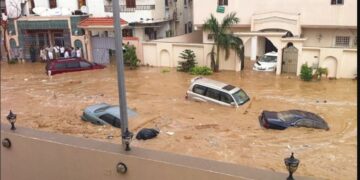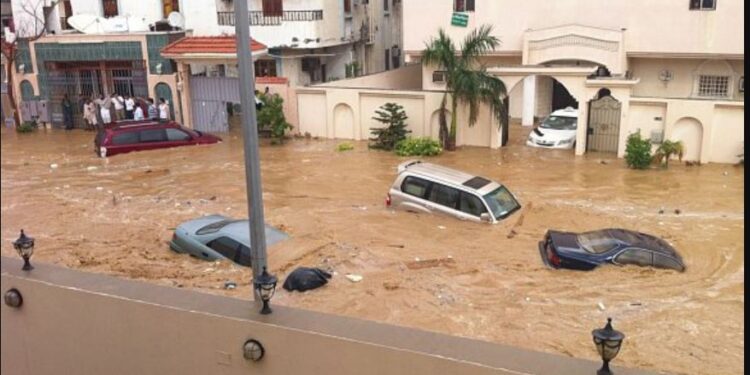By Ebi Kesiena
At least 150 people have died after a powerful storm caused severe flooding in eastern Libya, an official has said on Monday.
Storm Daniel made landfall in the North African nation prompting authorities to declare a state of extreme emergency, while schools and shops have been ordered to close.
Images filmed by residents of the Libyan disaster area showed massive mudslides, collapsed buildings and entire neighbourhoods submerged under muddy water.
Mohamed Massoud, a spokesman for the Benghazi-based administration in Libya, confirmed the incidence to French news agency AFP.
“At least 150 people were killed as a result of flooding and torrential rains left by storm Daniel in Derna, the Jabal al-Akhdar region and the suburbs of Al-Marj.
“This is besides the massive material damage that struck public and private properties’’ he said.
Storm Daniel has affected the eastern cities of Benghazi and Sousse, as well as Derna and Al-Marj.
The western city of Misrata was also among those hit by the floods.
Unverified videos of the storm have been circulating online, including a clip showing torrents of floodwater sweeping a man away. Other footage shows drivers trapped on their car roofs.
Also, the prime minister of the rival, internationally recognized government in the capital Tripoli, Abdulhamid Dbeiba, said he has directed all state agencies to immediately deal with the damage and floods, while the United Nations in Libya said it was following the storm closely and would provide urgent relief assistance in support of response efforts at local and national levels.
The United Nations mission in Libya on Monday said on X, formerly Twitter, that it was “closely following the emergency caused by severe weather conditions in the eastern region of the country”.
Libya has been divided between two rival administrations since 2014, following the killing of long-time leader Muammar Gaddafi in 2011.
Last week, Storm Daniel struck Greece, Turkey and Bulgaria, killing more than a dozen people.
Climate scientists have warned that global warming means more water evaporating during the summer, leading to more intense storms.


































